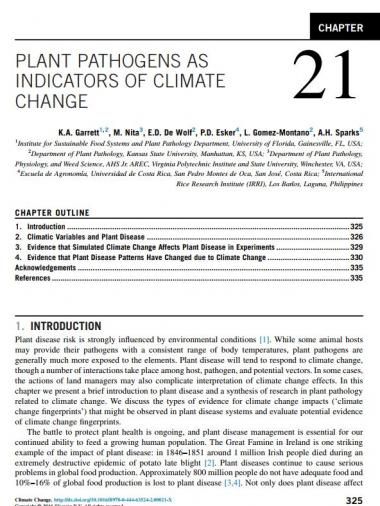Plant Pathogens as Indicators of Climate Change

The response of plant disease to weather variables such as temperature and precipitation is well known, and has been the basis for disease forecasting models used in decision-making by farmers and policy makers. Thus, plant disease risk can readily shift under climate change. Predicting changes in risk under climate change is complicated by the many biological interactions that result in disease. For example, some plant diseases occur when the phenology of plant and pathogen are aligned, in the case of Fusarium head blight so that spores are ready to infect during wheat flowering. There are numerous examples of experiments involving simulated climate change that have shown changes in disease risk. Finding indicators of climate change effects on disease in real agricultural or natural systems is more challenging because of the correlative nature of the observations and the potential for many other factors to influence disease, such as changes in host abundance. Assessments of global disease databases suggest some pathogen range shifts consistent with predicted outcomes for climate change. There are also several cases of emerging tree diseases in which climate change has likely played a role.
Citation
Garrett KA, Nita M, De Wolf ED, Esker PD, Gomez-Montano L, Sparks AH. 2016. Plant Pathogens as Indicators of Climate Change. In: Letcher TM, ed. 2016. Climate Change (Second Edition): Observed Impacts on Planet Earth. Amsterdam, Netherlands: Elsevier.